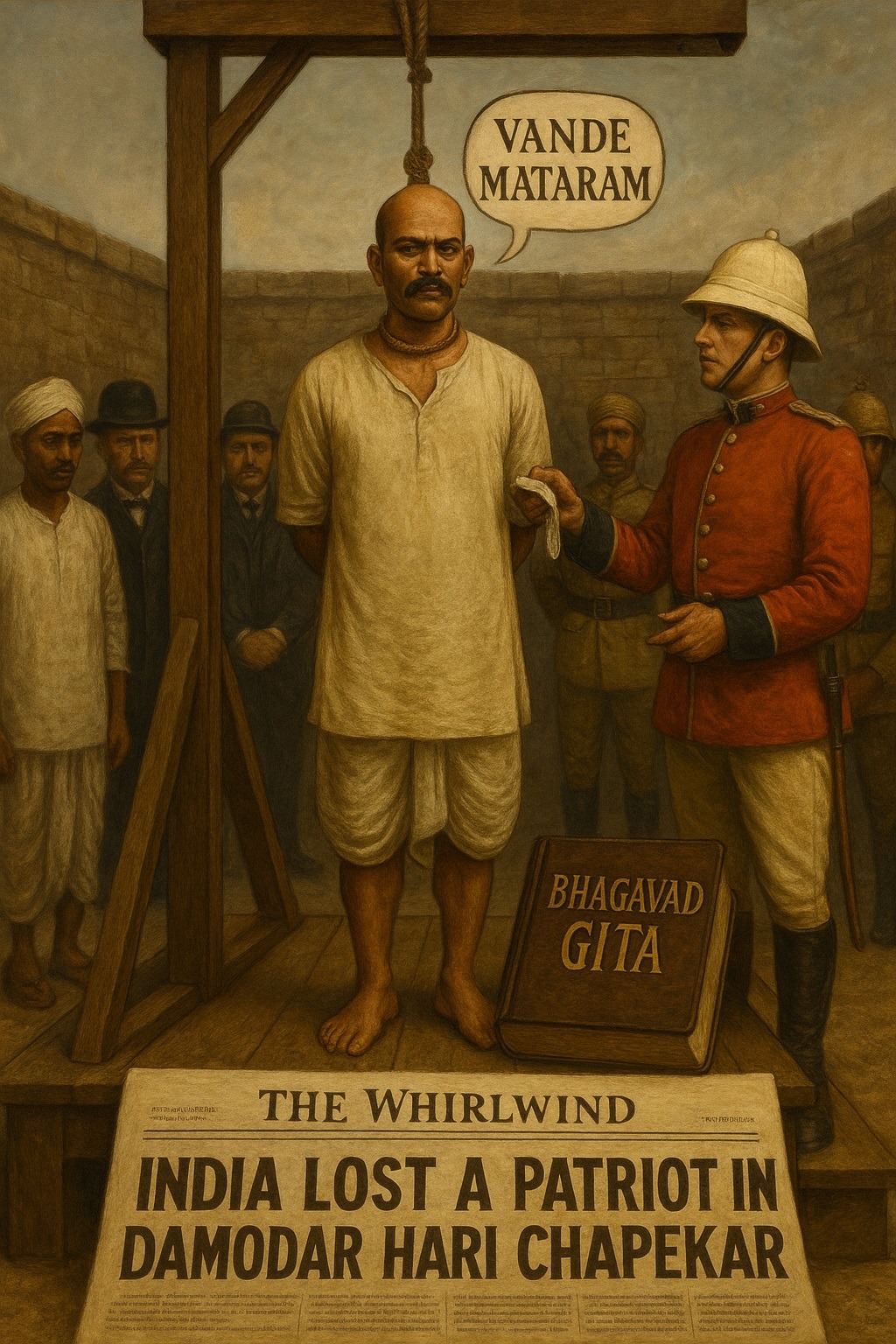In the closing years of the 19th century, when the Indian National Congress (INC) still placed its hopes in petitions and polite appeals, a young man from Chinchwad near Pune took a radically different path. Damodar Hari Chapekar became one of the first Indians in modern history to take up arms against British colonial authority — marking a decisive turn from loyal protest to revolutionary action.
Early Life and Influences
Born into a Chitpavan Brahmin family, Damodar grew up in a period of growing nationalist sentiment and Hindu revivalist thought. Alongside his brothers, Balkrishna and Vasudeo, he was deeply disturbed by the political subjugation of India and the cultural humiliation endured under British rule. This unrest simmered in their minds, ready to ignite when provocation came.
The Plague and British High-Handedness
That provocation arrived with the outbreak of the bubonic plague in Pune in 1896–97. The British appointed Walter Charles (W.C.) Rand as plague commissioner, who imposed intrusive, heavy-handed measures — barging into homes, ignoring religious customs, and treating locals with open disdain.
For many in Pune, these measures felt like an assault on dignity as much as on disease. For the Chapekar brothers, they were the final straw.
Assassination of W.C. Rand
On the evening of 22 June 1897 — the day of Queen Victoria’s Diamond Jubilee — Damodar and Balkrishna Chapekar struck. They assassinated W.C. Rand and his military escort, Lt. Ayerst, in Pune. The timing was no accident: it sent a symbolic message that British imperial celebrations could not mask the realities of oppression.
Trial, Execution, and Martyrdom
Damodar was soon arrested, tried, and swiftly sentenced to death. He took full responsibility for the act, refusing to implicate anyone else. On 18 April 1898, he was executed by hanging at Yerwada Central Jail.
Accounts describe him meeting death with calm resolve, showing neither fear nor regret. The British authorities, anxious to prevent his martyrdom, denied his family the body, burying him instead within the prison grounds.
Influence on Savarkar and Revolutionary Nationalism
Among those deeply moved by Damodar’s sacrifice was a 15-year-old Vinayak Damodar (Veer) Savarkar. For Savarkar, the Chapekar brothers embodied a new ideal — one of militant nationalism and the willingness to sacrifice one’s life for freedom. Years later, he commemorated them in his writings and drew upon their example when forming Abhinav Bharat in 1904, an organization dedicated to armed resistance against British rule.
Final Thoughts: The Legacy of the Chapekar’s
The assassination of Rand stands as one of the earliest acts of political violence against the British Raj in modern Indian history. It was a bold rejection of gradual reform, laying ideological groundwork for the revolutionary movements that would follow.
Though less remembered in mainstream discourse today, Damodar Hari Chapekar’s life marked a turning point — from protest to revolution, from hope in imperial goodwill to the conviction that freedom could only be won through direct action. His legacy survives in the broader saga of India’s independence struggle, inspiring generations who refused to bow to colonial rule.
Do you think the Chapekar brothers were justified in using violence against the British? Why or why not? How might the Indian freedom movement have been different if Savarkar had not been influenced by the Chapekar brothers? Do you think Savarkar’s revolutionary ideology would have developed the same way without the example of Damodar Hari Chapekar? Share your insights in the comments below!
Sources:
SAMPATH, Vikram. 2019. Savarkar (Part 1). Echoes from a forgotten past. 1883-1924. Penguin Random House India: Gurgaon.
KEER, Dhananjay. 1988. Veer Savarkar. Third Edition. (Second Edition: 1966). Popular Prakashan: Bombay (Mumbai).


Leave a Reply